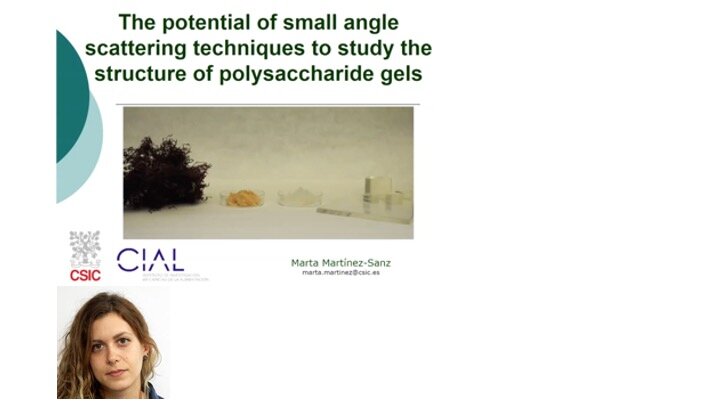VIDEO - Northern Lights on Food II workshop - The potential of small angle scattering to study the structure of polysaccharide-based gels with Marta Martinez Sanz


VIDEO - Northern Lights on Food II workshop - The potential of small angle scattering to study the structure of polysaccharide-based gels with Marta Martinez Sanz
Speaker: Marta Martinez Sanz, CIAL-CSIC, Madrid, Spain
This lecture was part of the workshop, Northern Lights on Food II, organised on June 9-11, 2021, by the LINXS working group Food, with support from Formas.
Abstract
Polysaccharides are of great interest within the food industry, not only because they are the major component in foods such as fruits and vegetables, but also because they play a crucial role as food additives to provide different functionalities (e.g. thickeners, gelling agents, emulsifiers, etc.). In particular, seaweed polysaccharides such as agar, carrageenan and alginate, are widely used as gelling and thickening agents. These polysaccharides are water-soluble and under certain conditions can form highly hydrated gel structures known as hydrogels. Despite their great interest in the food industry, the native structure of these polysaccharide hydrogels and their gelation mechanisms are still not fully understood. Scattering techniques offer a great advantage over other characterization methods since they require minimal sample preparation, avoiding the severe structural alterations induced by drying processes, and allow the carrying out of temperature-resolved experiments to investigate the structural changes taking place during gelation and melting processes.
In this talk, relevant results on the structure of seaweed polysaccharide-based hydrogels aimed for different food-related applications will be presented, showing the potential of combining small angle scattering techniques (SAXS and SANS) with complementary methods such as rheology, spectroscopy and microscopy. For instance, through SANS contrast variation and temperature-resolved SAXS experiments, the step-wise mechanism driving the gelation process in different agar-based extracts was elucidated, determining the effect of their composition (i.e. the presence of other components such as proteins and minerals) and molecular structure (i.e. molecular weight, agarose content and sulphate content), as well as the implications on their rheological and mechanical properties. Another example is related to the study of the structure of -, ɩ- and λ-carragenaan hydrogels and the relationship with their texture and rheological behavior. By selecting the suitable type of carragenaan and adjusting the salt content, it was possible to produce hydrogels with very different textures, i.e. from spreadable pastes to strong gels. Agar and carrageenans were also used as gelling matrices for the development of emulsion-filled gels with potential as fat substitutes in food. The use of small angle scattering techniques was essential to unravel the structural role of polysaccharides in these novel structures and understand their rheological behavior.
These results demonstrate the potential of small angle scattering techniques, especially when combined with complementary methods, to provide valuable insights on the structure of polysaccharide-based hydrogels, enabling the rational design of new food additives with interesting functionalities for a wide range of applications.
